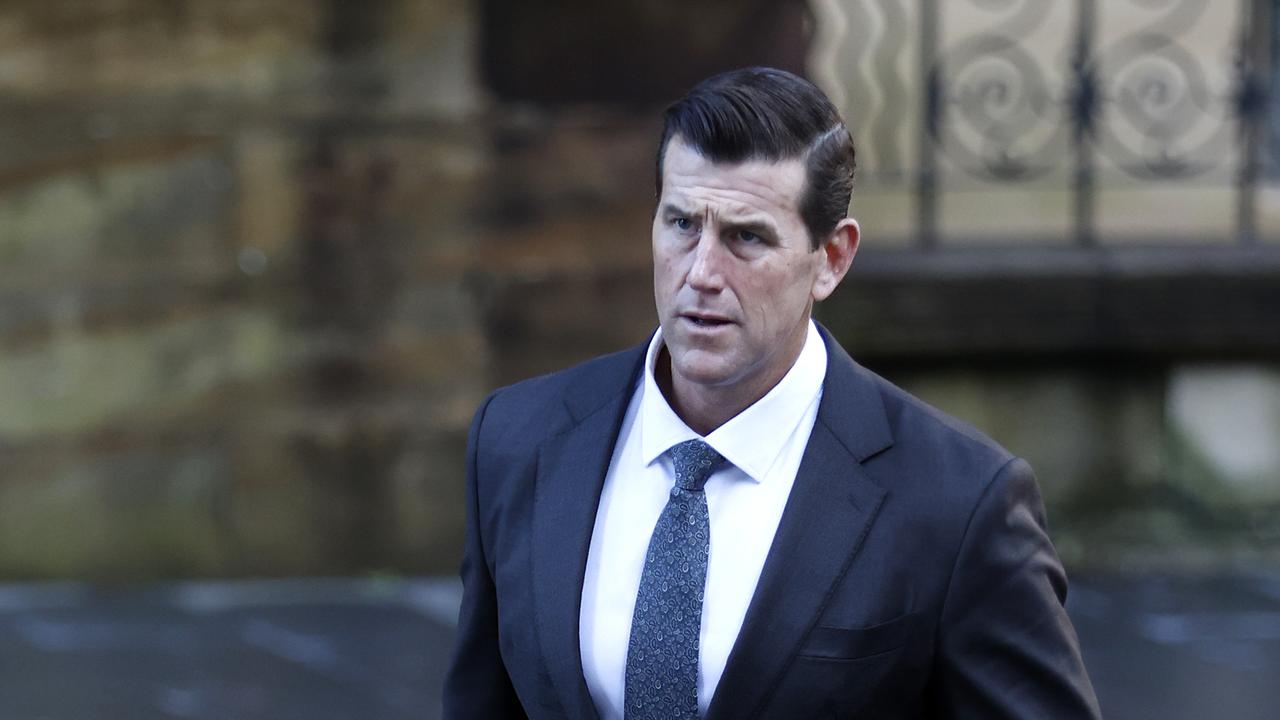THE FACTS
Highly decorated former soldier Ben Roberts-Smith VC MG was the subject of 16 media stories that collectively alleged among other things that he had murdered civilians in Afghanistan and committed an act of domestic violence against a woman.
Roberts-Smith brought three actions in the Federal Court of Australia for defamation. The first action was brought against Fairfax Media Publications Pty Limited, Mr Nick McKenzie, Mr Chris Masters and Mr David Wroe. The second action was against The Age Company Pty Limited, Mr Nick McKenzie, Mr Chris Masters and Mr David Wroe. The third action was brought against The Federal Capital Press of Australia Pty Limited, Mr Nick McKenzie, Mr Chris Masters and Mr David Wroe. The three proceedings were heard together.
RELEVANT DEFAMATION LAW
MEANING OF DEFAMATORY
A plaintiff is said to have been defamed if a publication causes the reasonable person to think less of them: Reader’s Digest Services Pty Ltd v Lamb [1982] HCA 4.
In Random House Australia Pty Ltd v Abbott [1999] FCA 1538, Beaumont J stated:
“The test for what may be defamatory at common law is well established. A publication, without justification or lawful excuse, exposing a person to hatred, contempt or ridicule, calculated to injure that person’s reputation, is a libel. But this is not to be taken as an exhaustive statement. A person may be defamed by an imputation of a disability in the performance of the functions of his or her office, although the imputation does not expose him or her to hatred, contempt or ridicule. A false statement about a person to his or her discredit is defamatory. Thus to attribute to a person a want of capacity as the holder of an office will be defamatory. The mere imputation of a lack of ability to discharge the duties of that office is sufficient. It is not necessary that there should be an imputation of immoral or disgraceful conduct (per Brennan J in John Fairfax v Punch [1980] FCA 100; (1980) 31 ALR 624 at 632 – 633 citing Lord Herschell in Alexander v Jenkins [1892] 1 QB 797 at 800). Thus, the substantive legal issue here may be expressed as whether the material complained of was defamatory of the plaintiffs in that it was to his or her “discredit … [tended] to lower him [or her] in the estimation of others … to expose him [or her] to hatred, contempt or ridicule, or to injure his [or her] reputation in his [or her] trade or profession” (see Chakravarti v Advertiser Newspapers (1998) 193 CLR 519 per Gaudron and Gummow JJ at 545 quoting Gatley on Libel and Slander, 8th ed. (1981), par 31)”
To be defamatory, the matter must injure the plaintiff’s reputation by lowering them in the estimation of others, exposing them to hatred, contempt or ridicule or causing them to be shunned or avoided.
Defamatory meaning can arise from the natural and ordinary meaning or true innuendo of the matter. True innuendo refers to matter which is defamatory as a result of an audience’s knowledge of certain extrinsic facts.
TRUTH
Section 25 of the Defamation Act 2005 provides that:
“It is a defence to the publication of defamatory matter if the defendant proves that the defamatory imputations carried by the matter of which the plaintiff complains are substantially true.”
CONTEXTUAL TRUTH
Section 26 of the Defamation Act 2005 provides that:
“26 Defence of contextual truth
It is a defence to the publication of defamatory matter if the defendant proves that:
(a) the matter carried, in addition to the defamatory imputations of which the plaintiff complains, one or more other imputations (“contextual imputations”) that are substantially true, and
(b) the defamatory imputations do not further harm the reputation of the plaintiff because of the substantial truth of the contextual imputations.”
Federal Court of Australia decision
The following imputations were admitted by the defendants to have been conveyed from the articles sued on or found by Justice Anthony Besanko to have been conveyed:
(1) Roberts-Smith while a member of the SASR, murdered an unarmed and defenceless Afghan civilian, by kicking him off a cliff and procuring the soldiers under his command to shoot him (Imputation 1).
(2) Roberts-Smith broke the moral and legal rules of military engagement and is therefore a criminal (Imputation 2).
(3) Roberts-Smith disgraced his country Australia and the Australian army by his conduct as a member of the SASR in Afghanistan (Imputation 3).
The second group of articles were published on 10 and 9 June 2018. Roberts-Smith claimed that the following imputations were conveyed or communicated by the Group 2 articles:
(1) Roberts-Smith while a member of the SASR, committed murder by pressuring a newly deployed and inexperienced SASR soldier to execute an elderly, unarmed Afghan in order to “blood the rookie” (Imputation 4).
(2) Roberts-Smith while a member of the SASR, committed murder by machine gunning a man with a prosthetic leg (Imputation 5).
(3) Roberts-Smith while a member of the SASR, murdered an unarmed and defenceless Afghan civilian, by kicking him off a cliff and procuring the soldiers under his command to shoot him (Imputation 1).
(4) Roberts-Smith having committed murder by machine gunning a man in Afghanistan with a prosthetic leg, is so callous and inhumane that he took the prosthetic leg back to Australia and encouraged his soldiers to use it as a novelty beer drinking vessel (Imputation 6).
Roberts-Smith was not named in the Group 1 articles or the Group 2 articles. A soldier called “Leonidas” was referred to. By the end of the trial, there was no dispute about the identification of Roberts-Smith in the Group 1 and Group 2 articles.
The third group of articles were published on 11 and 10 August 2018. Roberts-Smith was named in these articles and there was never any identification issue. Roberts-Smith claimed that the following imputations were conveyed or communicated by the Group 3 articles:
(1) Roberts-Smith committed an act of domestic violence against a woman in the Hotel Realm in Canberra (Imputation 7).
(2) Roberts-Smith is a hypocrite who publicly supported Rosie Batty, a domestic violence campaigner, when in private he abused a woman (Imputation 8).
(3) The applicant as deputy commander of a 2009 SASR patrol, acquiesced in the execution of an unarmed Afghan by a junior trooper in his patrol. (Imputation 9).
(4) Roberts-Smith during the course of his 2010 deployment to Afghanistan, bashed an unarmed Afghan in the face with his fists and in the stomach with his knee and in so doing alarmed two patrol commanders to the extent that they ordered him to back off (Imputation 10).
(5) Roberts-Smith as patrol commander in 2012 authorised the assault of an unarmed Afghan, who was being held in custody and posed no threat (Imputation 11).
(6) Roberts-Smith engaged in a campaign of bullying against a small and quiet soldier called Trooper M which included threats of violence (Imputation 12).
(7) Roberts-Smith threatened to report Trooper J to the International Criminal Court for firing at civilians, unless he provided an account of a friendly fire incident that was consistent with the applicant’s (Imputation 13).
(8) Roberts-Smith assaulted an unarmed Afghan in 2012 (Imputation 14).
However, despite finding in Robert Smith’s favour on the defamatory imputations that had been conveyed, Justice Besanko determined that the defendants had established on the balance of probabilities that many of those imputations were substantially true, particularly the most serious ones:
“The following are the major conclusions.
(1) The applicant’s conduct and actions on the mission to W108 as found means that the respondents have established the substantial truth of Imputations 2, 3, 4, 5, 6 and 9;
(2) The applicant’s conduct and actions on the mission to Darwan as found means that the respondents have established the substantial truth of Imputations 1, 2 and 3;
(3) The applicant’s conduct and actions on the mission to Chinartu as found means that the respondents have established the substantial truth of Imputations 2 and 3;
(4) The respondents have not established the Particulars of Truth with respect to the mission to Syahchow on 20 October 2012;
(5) The respondents have not established the Particulars of Truth with respect to the mission to Fasil on 5 November 2012;
(6) With respect to the alleged bullying of Person 1, the respondents have established the substantial truth of Imputation 12;
(7) With respect to the alleged unlawful assaults on PUCs, and this relates to Imputations 10, 11 and 14, the respondents have established the substantial truth of those imputations;
(8) With respect to the alleged act of domestic violence and Imputations 7 and 8, I am not satisfied that Person 17’s evidence is sufficiently reliable to form the basis of a finding that the assault occurred and that Imputations 7 and 8 are substantially true. However, I consider that the respondents have made out the defence of contextual truth (s 26) with respect to those imputations.
(9) With respect to the alleged threat to “Trooper J” and Imputation 13, I am not satisfied that the evidence is sufficiently clear to support a threat of the type advanced by the respondents and that they have shown the imputation to be substantially true. However, I am satisfied that the respondents have made out a defence of contextual truth (s 26) with respect to that imputation.
In light of my conclusions, each proceeding must be dismissed. At this point, I would ordinarily publish my reasons, but I understand that the Commonwealth has an application to make in that regard.I will shortly move into closed Court to publish my closed Court reasons. As I have said, I will ask the parties and the Commonwealth to consider carefully whether there are aspects of the closed Court reasons which might be published on an unrestricted basis.”
CONCLUSION
The stakes on both sides were enormous in this incredibility costly case relating to the reputation of a highly decorated former soldier who was awarded the Victoria Cross (VC) for bravery. On the one hand, Australia’s most celebrated soldier’s reputation was on the line because he had been accused of war crimes and other awful acts. On the other, a very costly loss for the defendants may well have had a chilling effect on public interest reporting. This decision is a disaster for Roberts-Smith because it amounts to a declaration that he is a war criminal.
An additional risk for Ben Roberts-Smith that now looms is the possibility of criminal charges in relation to war crimes.
This case is likely to also feature in defamation textbooks on the defence of contextual truth and how when many defamatory imputations arise from defamatory matters sued on, establishing the most serious allegations can be sufficient to defeat the entire claim, despite some defamatory imputations found to be unproven. This case is a stunning demonstration of how this statutory defence operates.
In a spectacular fall from grace, a war hero has now been officially disgraced. Although an appeal is likely because the stakes are so high, it is likely that Ben Roberts-Smith’s reputation has been permanently destroyed.
Posted on Categories Defamation














